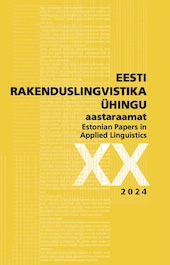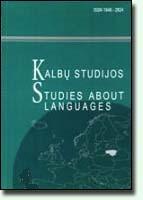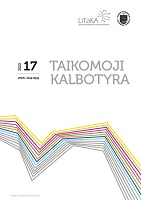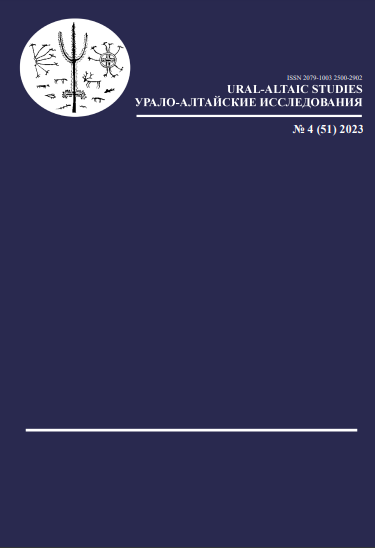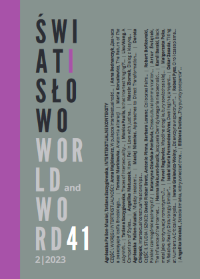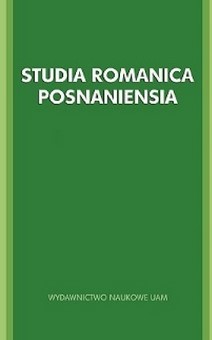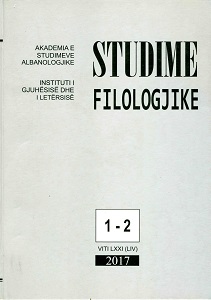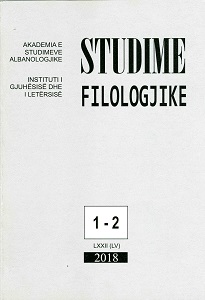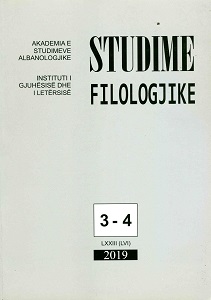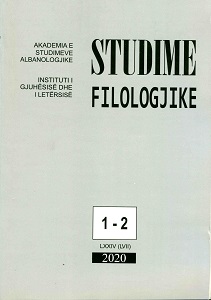Author(s): Ina Arapi / Language(s): Albanian
Issue: 01-02/2018
This article analyzes the evolution of the phonetic structure and grammatical categories of the infinitive in the Albanian language. When we speak about the infinitive in Albanian, we always keep in mind the infinite analytical verbal form of the type me + participle, which is used in the Gheg dialect with the syntactic functions that are characteristic for the infinitive of the i.e. languages. In a synchronous plane, the infinitive of the type me + participle is interpreted as consisting of the particle me “with” and the participle. The particle me is of prepositional origin, but has long lost its functions as preposition and has been completely desemantized, while the second element fully corresponds to the participle, which is a fact widely accepted in all descriptive grammars of the Albanian language. In the diachronic plane, this participle is sometimes considered as participle, sometimes as a substantiate participle and sometimes as infinitive, but the most grounded opinion seems to be the assumption that here, we are at its origins dealing with a substantiate participle without an article of type pasë -a “having”, lypë -a “begging” etc. Under these conditions we must admit that the infinitive of type me +participle was formed as such during the historical evolution, together with the particle me, which is proved by the fact that the particle me at the Gheg infinitive is necessary and cannot be absent, as for example in German or Romanian. So the particle me has become an indispensable morpheme for the infinitive, just like the morpheme të for the subjunctive mood. Since the first written document (1555) the Gheg infinitive has undergone significant phonetic changes, which relate to the participle and not to the particle me, which has remained unchanged throughout this time. The paper is divided into two parts. The first section presents the phonetic evolution of the infinitive, that is, the Gheg participle, dividing it into two historical periods. The first period includes the works of the old Gheg writers who were written from the middle of the 16th century to the middle of the 18th century (Gjon Buzuku, Pjetër Budi, Frang Bardhi, Pjetër Bogdani, Kuvendi i Arbënit, Gjon Kazazi), while the second period includes works written by the second half of the 18th century until 1872. The main feature of the phonetic structure ofthe infinitive during the first period is that it comes out with a suffix regularly. The suffixes with which the participle is formed, respectively the infinitives are: -m, -në, -un(ë), -ë and -të. On the basis of the very detailed excerpts she has made, the author points out the first cases of the suffixes being dropped and mixed up. In the second period (The Anonymousof Elbasan, Dhaskal Todhri, Zef Guagliata, Zef Jubani, Konstantin Kristoforidhi) the tendency of losing the suffixes in the participle and infinitive, as well as that of their mixing, is increasing. The later authors tend to sporadically preserve the suffixes. In conclusion, we can say that during the literary period, beginning in the middle of the 16th century the participle and respectively the infinitive in the Gheg dialect has two forms: an earlier form we can also call the full form and a later one we might also call it the abbreviated form. The numerous phonetic changes that the Gheg participle / infinitive have undergone may be an indicator of its relatively young age. On the other hand, these changes are also related to the frequency of its use in this dialect, which has been increasing and which has undoubtedly been one of the main causes that have led to its phonetic leveling. In the second part of the paper, we analyze the grammatical categories of the Gheg infinitive, i. e. the grammatical category of diathesis and that of time. Diathesis is the only grammatical category of the infinitive, clearly distinguished since the first written document of Albanian. The diathesis is constructed by the particle u of pronominal origin placed between the particle me and the participle or with the auxiliary verb jam “to be”. For example: Natyra e këtyne qiellje ashtë gjithëherë me u luejtune “la natura di questi Cieli ë di sempre muoverci” (Bogdani I, 25); ashtu, sikundrëse meriton me qenë paguom puna e tyre “just as their work deserves to be paid” (Budi, Dottrina Christiana, 127). There are no functional differences between these two forms. In the semantic plane, the forms with u denote the action simply as being any process, those with the verbjam denote the action more as a result of a process, so they emphasize the resultant aspect. Regarding the grammatical category of the time, as in most languages that have an infinitive, in Albanian also, there are formally two fonns of it: present and past. The present infinitive, as we have mentioned at the outset, is formed by the particle me with the participle of the conjugated verb, for instance me punue “to work”, while the past infinitive from the infinitive of the auxiliary verb kam “to have” and the participle of the conjugated verb, i. e. me pasë punue “to have worked”. In terms of the temporal meanings expressed by the present infinitive we must first distinguish the so called independent from the dependent infinitive. The independent infinitive is usually used with the temporal meaning of the present, while the dependent infinitive has a temporal meaning conditioned by the temporal meaning of the directional verb. The passive form of the infinitive is constructed by the pronominal particle u placed between the particle me and the participle. While analyzing the use of the past infinitive by the old Albanian writers, the author concludes that the past infinitive is actually used by them in the temporal sense of the future. Consequently, it can be said that the grammatical category of time by the Albanian infinitive has fictitious and not real value.
More...


